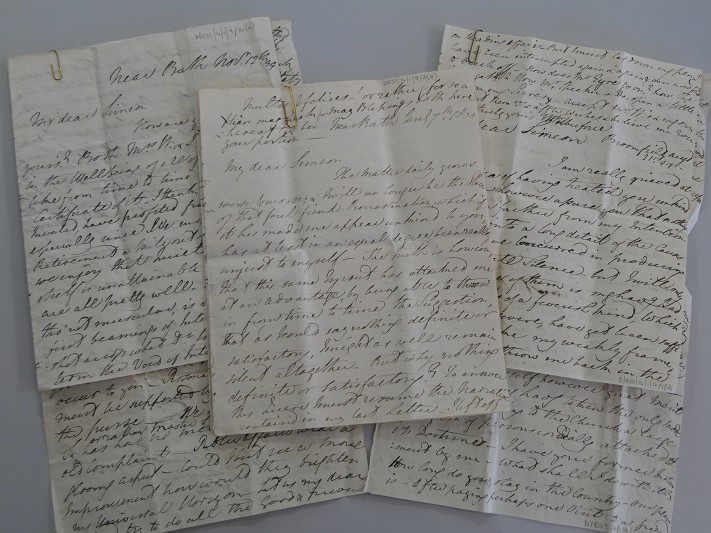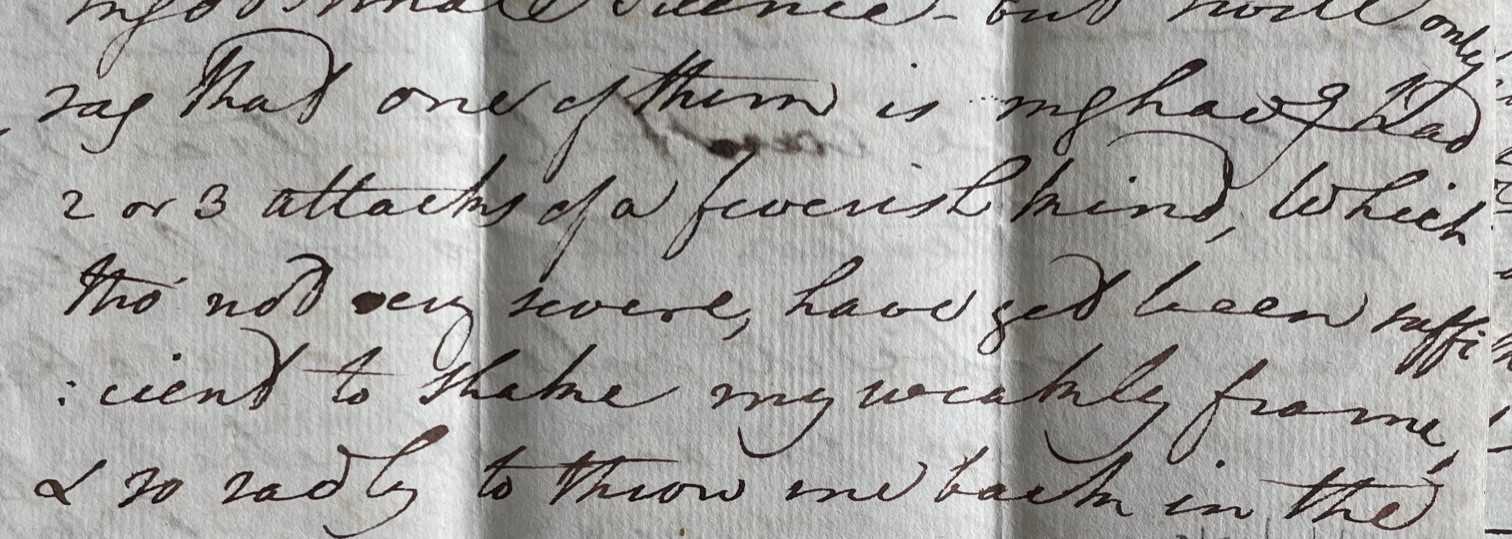William Wilberforce was a politician, philanthropist and leading abolitionist of the 18th and 19th centuries. We hold three letters written by him to John Simeon of Reading, politician and barrister.

The letters contain some general family news, including the announcement of the birth of Wilberforce’s daughter [Barbara]: “Mrs W. having brought me a Daughter on the very day of the month on which the year before our son made his appearance. Both mother & child I thank God have uniformly done well.”
They also cover some of Wilberforce’s health issues as he apologises for the delay in replying to Simeon’s letters: “had 2 or 3 attacks of a feverish kind, which tho’ not very severe, have yet been sufficient to shake my weakly frame”.

However, the letters are most revealing in shedding light on the role both men played in the secession of Reading St Mary, Castle Street from Reading St Giles, described in the letters as the "Reading Affair".
During the 1730s and 40s, Great Britain had experienced the ‘Evangelical Revival’. Spearheaded in England by the brothers, John and Charles Wesley, and George Whitefield, they challenged the views of the Church of England and founded Methodism. However, they were not well received in Reading. When John Wesley spoke at a meeting in 1739, he was met by a “zealous mob” that “was so enraged, they were ready to tear the house down” (John Wesley Journal, Vol 1, p.228).
However, by the late 1700s, things had changed in Reading. Due to the work of William Talbot and eventually William Hall Cadogan, both ministers at Reading St Giles, an evangelical spirit was being felt in the town. John Simeon’s brother, Charles, was converted by Cadogan and went on to become vicar of Holy Trinity, Cambridge.
Cadogan died in 1797, his replacement was one Reverend Joseph Eyre who was not sympathetic to the evangelicals. Disquiet grew among the congregation of St Giles and eventually a group decided to break away to form their own church. After renting a property in St Mary’s Butt’s, the decision was made to build a new Chapel and the location of the Old County Gaol on Castle Street was the chosen spot. They raised funds with numerous people subscribing, including John Simeon who gave £50 (image below from Reading St Mary accounts, D/P175/5/1).

William Wilberforce was a known supporter of the evangelical wing of Christianity and Simeon had clearly spoken to him about “the Reading affair” and asked him about contributing money, presumably to the new Chapel. Unfortunately, as we do not have Simeon’s letters, or were witness to their private conversations, we cannot be sure.
Throughout the letters, Wilberforce is carefully treading a middle ground of supporting the Reading evangelicals, but wary of endorsing secessions in general as he stressed the “extreme importance of keeping any Body of men in the Church while there”. Indeed, in a letter from 1800 he confesses he was “far from having made up my mind” regarding “approving…the Secession”.

Wilberforce’s personal preference for the advancement of evangelism was to “multiply & to amend the Evangelical ministers of the Church of England” and to “conciliate the minds of men in power to the Evangelical Clergy”. Given his position as a MP, and the influence he could have on men in power, he was wary of doing anything that might “even by Perversion or Misconstruction, be turn’d into an argument to prove me…too closely connected with them”.
These letters provide a fascinating insight into Wilberforce’s beliefs and the role he played in the Reading Affair.
Transcripts of the letters are available to view on our online catalogue
